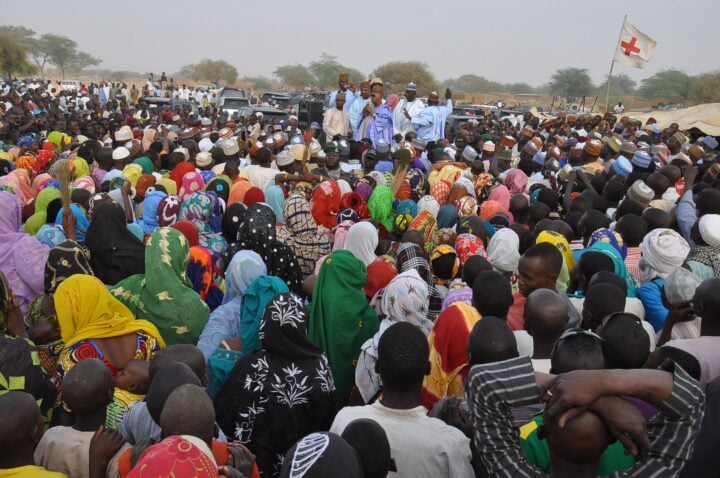A joint report by the World Food Programme (WFP) and the Food and Agricultural Organisation (FAO) says over 24.8 million Nigerians are at risk of acute food insecurity between June and August.
The report which was published on Monday, listed Nigeria, Afghanistan, and South Sudan as part of the 18 hunger hotspots in the world.
The WFP-FAO report said all the hotspots at the highest level have populations facing or projected to face starvation or are at risk of deterioration towards catastrophic conditions, given they have already critical food insecurity.
“In Nigeria, acute food insecurity is expected to deteriorate in the outlook period, driven by the multidimensional security crisis, together with weak macroeconomic conditions and multiple natural hazards,” the report said.
Advertisement
“Over 24.8 million people are projected to be acutely food insecure between June and August 2023, including 1.1 million people in emergency (CH Phase 4). Humanitarian access constraints remain very high, particularly in Borno, Yobe and Adamawa, where at least 31 local government areas remain partially or completely inaccessible.
“The acute food insecurity is likely to deteriorate further in 18 hunger hotspots – comprising a total of 22 countries – during the outlook period from June to November 2023.
“Afghanistan, Nigeria, Somalia, South Sudan and Yemen remain at the highest concern level. Haiti, the Sahel (Burkina Faso and Mali) and Sudan have been elevated to the highest concern levels; this is due to severe movement restrictions of people and goods in Haiti, as well as in Burkina Faso and Mali, and the recent eruption of conflict in Sudan.
Advertisement
“All the hotspots at the highest level have populations facing or projected to face starvation (catastrophe, integrated food security phase classification [IPC]/Cadre Harmonisé [CH] Phase 5), or are at risk of deterioration towards catastrophic conditions, given they have already critical food insecurity (emergency, IPC/CH phase 4) and are facing severe aggravating factors. These countries require the most urgent attention.”
According to the report, the deterioration of acute food insecurity in hunger hotspots occurs in the context of a global food crisis.
“The global economy is expected to slow down in 2023 – amid monetary tightening in advanced economies – increasing the cost of credit,” the report added.
“Despite a year-long easing of international food prices, domestic prices remain high, amid low foreign currency reserves in many countries, restricting imports. Limited economic access is likely to be further compounded by the overall reduction in donor support to offset global hunger.
Advertisement
“Weather extremes, such as heavy rains, tropical storms, cyclones, flooding, drought and increased climate variability, remain significant drivers in some countries and regions.”
‘NIGERIA, AFGHANISTAN IN DARE NEED OF HUMANITARIAN ACTION’
The WFP-FAO noted that the 18 hunger hotspots, including Nigeria, needed urgent humanitarian action, and two regional
clusters comprising a total of 22 countries.
“In the hunger hotspots, parts of the population will likely face a significant deterioration of already high levels of acute food insecurity, putting lives and livelihoods at risk,” the report said.
Advertisement
“Targeted humanitarian action is urgently needed to save lives and livelihoods in all 18 hunger hotspots. In eight of these – Afghanistan, Haiti, Nigeria, the Sahel region (Burkina Faso and Mali), Somalia,\ South Sudan, Sudan and Yemen – humanitarian action is critical to prevent starvation and death.
“Organised violence and armed conflict continue to constitute key drivers of acute food insecurity in the following hunger hotspots: Central African Republic, eastern Democratic Republic of the Congo, Ethiopia, Haiti, Nigeria, the Sahel (Burkina Faso, Mali), Somalia, South Sudan, Sudan, the Syrian Arab Republic and Yemen.”
Advertisement
Add a comment







